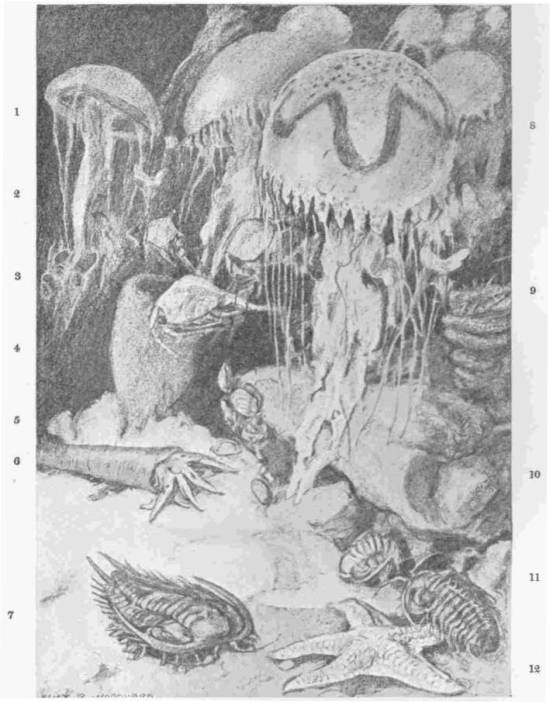




III
AS everybody knows nowadays, the knowledge we possess of life before the beginnings of human memory and tradition is derived from the markings and fossils of living things in the stratified rocks. We find preserved in shale and slate, limestone, and sandstone, bones, shells, fibres, stems, fruits, footmarks, scratchings and the like, side by side with the ripple marks of the earliest tides and the pittings of the earliest rain-falls. It is by the sedulous examination of this Record of the Rocks that the past history of the earth?s life has been pieced together. That much nearly everybody knows to-day. The sedimentary rocks do not lie neatly stratum above stratum; they have been crumpled, bent, thrust about, distorted and mixed together like the leaves of a library that has been repeatedly looted and burnt, and it is only as a result of many devoted lifetimes of work that the record has been put into order and read. The whole compass of time represented by the record of the rocks is now estimated as 1,600,000,000 years.
The earliest rocks in the record are called by geologists the Azoic rocks, because they show no traces of life. Great areas of these Azoic rocks lie uncovered in North America, and they are of such a thickness that geologists consider that they represent a period of at least half of the 1,600,000,000 which they assign to the whole geological record. Let me repeat this profoundly significant fact. Half the great interval of time since land and sea were first distinguishable on earth has left us no traces of life. There are ripplings and rain marks still to be found in these rocks, but no marks nor vestiges of any living thing.
